Your Guide to Hot Paprika, Smoked Paprika and Sweet Paprika
November 2022 – The Spanish Radish Blog
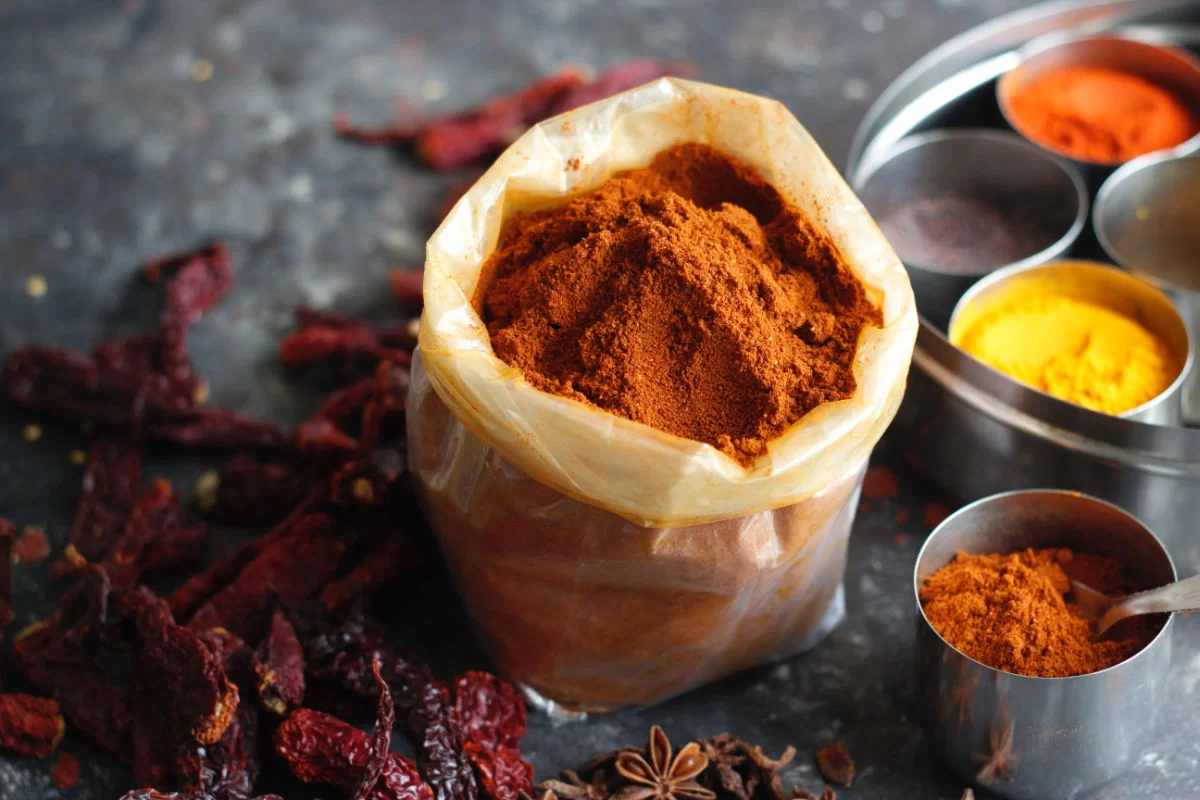
Paprika is like no other spice we know of. It’s different in most countries that produce it, and even within Spain, there are huge variations in flavor intensity and color. That’s because different peppers and drying methods are used.
If you’ve only ever tried ‘paprika’ (sweet paprika), you’re in for a treat. Come and explore the three main varieties of paprika with us, then learn about Spanish paprikas and how to use these to bring different meals alive.
In this article, we will explore the three main varieties of paprika, learn about Spanish paprikas, and how to use them in various authentic Spanish dishes and recipes.
The 3 main types of paprika
- Hot paprika (Pimentón Picante)
- Smoked paprika (Pimentón de la Vera)
- Sweet paprika (Pimentón Dulce)
The three main types of paprika available in the world are generally hot, smoked, and sweet. If you’re used to buying paprika in a supermarket and it’s just labeled ‘paprika’, it’s a safe bet that it’s your sweet variety.
There are different paprikas that suit different dishes, and even ingredients. Dash some hot paprika instead of sweet paprika over eggs, and you’ll know about it (although, this may be exactly what you’re going for, and that’s fine).
Let’s look at each variety of paprika in more detail, and the most typical types of dishes to use them with.
Hot paprika
As the name suggests, hot paprika has a distinctive ‘spice’ and it has a kick to it! It’s made from spicy red chili peppers, versus sweet red peppers. While it’s the hottest of the paprikas, it’s nowhere near as hot as other types of chili. It’s great for adding a lingering heat and mildly spicy element to a dish.
Hot paprika lends itself to stronger flavored dishes, where the flavor of sweet paprika would be lost. It’s commonly used in soups, hot curries, and stews.
Smoked paprika
Smoked paprika is made from peppers that are smoked or charred, then crushed and ground up. The intensity of the smokiness and flavor depends on the types of pepper used and the method of smoking. Its flavor is the strongest of all three paprikas so it can easily take over a meal, and often make a meal.
Sweet paprika
Used around the world, sweet paprika is a versatile spice thanks to its mild flavor. A sprinkle of this won’t overpower too many dishes or ingredients, although the color may be striking (often the desired effect).
Sweet paprika is commonly found in mild or sweet curries, stir-fries, and in seafood dishes. It’s a popular party pleaser too, and often makes an appearance on top of cream cheese and curried deviled eggs.
Season your seafood or meat dishes with sweet paprika to add some delicious flavor.

All about Spanish paprika
Paprika features in many, many Spanish recipes. From a little color boost to adding a defining flavor to a hearty meal, the world of paprika is a serious one in Spain. Chorizo, Spain’s most famous sausage, must contain paprika (and garlic) to be considered chorizo!
Let’s take a little journey into other famous Spanish food that uses paprika, and how you can bring a little bit of Spain into your home with just a few dashes of this ‘red gold’.
Pimentón picante (hot paprika)
Plain pimentón picante is used less than the other varieties in Spanish cooking. However, it’s common to use hot smoked paprika. Smoked paprika can range in intensity from sweet to spicy. We’ll dive into this more in a minute.
Pimentón dulce (sweet paprika)
Murcia is highly regarded for producing top Spanish sweet paprika. The peppers planted are the Bola variety. After the peppers are picked, they’re usually dried in the sun. Look for ‘Denominación de Origen Protegida’ on the packaging to confirm you’re buying the highest-quality paprika from the Murcia region.
Sweet paprika is versatile and can be found in dishes like Lacón a la Gallega (Galician cured ham) and Gambas al ajillo (garlic shrimp).
Pimentón ahumado (smoked paprika)
Smoked paprika is arguably Spain’s most well-known variety, even if it’s just for the dishes that rely on it. Some of the most famous Spanish recipes use it: seafood paella, patatas bravas.
Traditional Spanish smoked paprika is made by smoking peppers over a wood fire (holm oak or oak). La Vera (in Extremadura) is where the magic happens. The paprika here is still handmade and boasts a supreme color and taste. It adds an incredible richness to dishes and is a striking, brilliant red.
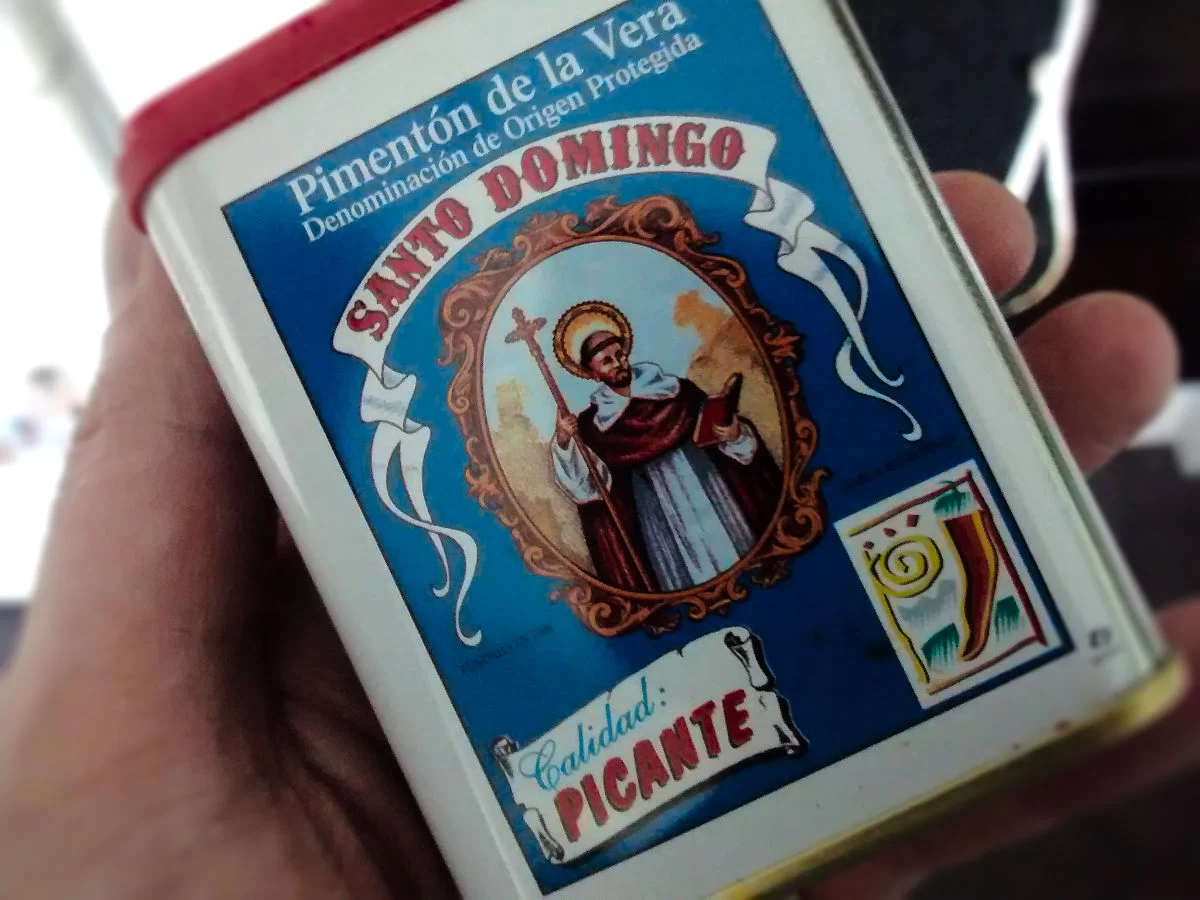
How to choose the best Smoked Spanish paprika
Look for ‘Consejo Regulador Denominación de Origen Protegida (de la Vera)’, which guarantees the paprika was made in La Vera. It can range from sweet to spicy, and of course, always has a luxuriously smoky finish.
Pimentón de la Vera works well in meat dishes (try this smoky sweet potato chorizo recipe), stews, rice dishes, and soups. It can also be sprinkled on meals for added color and flavor. Once you taste it, it becomes quite addictive. We also love it in vegan and vegetarian dishes because of the bold smoky taste (this is our favorite example – Chickpea stew / Potaje de garbanzos).
The best thing about paprika, as well as its incredible taste, is that it’s ridiculously healthy. Win-win!
Health benefits of paprika
Ancient civilizations used spices like paprika for medicinal purposes (some say as far back as five million years!). Many of the medicinal benefits were found by happy coincidence, but spices continue to play a large role in many communities, both as a flavor enhancer and for health reasons.
It’s no secret that red peppers are healthy. As a concentrated form of red peppers, paprika offers even more benefits. The spice does lose most of the vitamin C that red bell peppers are rich in, but paprika seems to gain significantly more in terms of other vitamins and minerals.
Here are some of the main health benefits of paprika:
- Boosts eye health – decreases the risk of developing cataracts and age-related macular degeneration
- Promotes a healthy heart – lowers the risk of heart disease by decreasing “bad” cholesterol
- Protects against some cancers – fights oxidative stress, which increases the risk of developing certain cancers
- Helps manage diabetes – improves blood sugar control
Here are the most impressive nutritional qualities of paprika:
- Antioxidants – these fight free radicals, support a healthy gut, as well as improve brain and mental health
- Anti-inflammatory – this helps to fight pain and keep inflammation levels down
- Vitamins – contains vitamin A, B6, and E
We must point out that none of these lists or information is exhaustive. Entire papers and studies have focused on paprika and its health benefits. Hopefully, you found this an interesting insight into the role paprika can play on your health (especially when combined with other nutritious food and exercise).
If you’re interested in reading about paprika’s health benefits in more detail, there are many great sites with free info online, such as ResearchGate.
We hope you’ve enjoyed learning a bit about paprika today. If you’ve just got a lone sweet paprika hiding in the back of the cupboard, why not treat yourself to a smoked and hot paprika too, or a combination?!
Once you start experimenting with these, you’ll be surprised at how many dishes can benefit from a delicate dash or an enthusiastic pour of this red gold.
Spanish paprika recipes
Here are our top 5 recipes that use paprika. Try them at home for yourself and experience the exquisite flavors that paprika can bring to your home cooking!
- Spinach and Chickpeas (Espinacas con Garbanzos)
- Lacón a la gallega
- Shrimp and mussels pasta
- Tuna Fish Empanada (Empanada Gallega)
- Spicy Patatas Bravas
Spicy Patatas Bravas
Easy Spanish tapas recipe | Vegan
Lacón a la Gallega
Galician cured ham with scalloped potatoes
Shrimp and Mussels Pasta
30 Minute recipe
Paprika FAQs
What is paprika best for?
Paprika can be used in many dishes, from salads to stews. That’s because there are three main types of paprika (sweet, hot, smoked) and each is vastly different. Sweet paprika is the mildest and the most versatile.
Is paprika spicy or not?
Some types of paprika are spicy, although not as hot as chili powder. Hot paprikas generally add heat to a meal but can’t replace chili in a recipe. However, chili and paprika can be found together in many recipes.
What is the taste of paprika?
Overall, paprika has an earthy flavor. The sweet variety has a sweet tinge and the smoked variety has a rich, smoky flavor that can be reminiscent of smoked meats.
Why is paprika so popular?
Paprika is popular due to its versatility, its affordability, and unique flavor characteristics. Many people also include paprika in their diets for health reasons. It’s been proven to prevent many diseases and improve certain medical conditions.
Is it healthy to eat paprika?
Yes, paprika is very healthy. Some of the health benefits it provides are improved eye health, helping to keep your heart healthy, and protection against some cancers.

Want to check out more produce from Spain?
Check out our regional foodie guides.
Our foodie guides are jam-packed with recipe ideas, travel tips, and where to find the best dishes in Spain.
Made for foodies by foodies.
Blog
Spanish Chicken Thighs with Roasted Peppers and Olives
Spanish Chicken Thighs with Roasted Peppers and Olives An Easy-To-Make, Flavor-Packed Classic That Brings Spain to Your Table A mouthwatering recipe for those busy weeknight dinners: Spanish Chicken Thighs with Roasted Peppers...
Spanish Chicken in Creamy Mustard Sauce – Pollo a la Mostaza
Spanish Chicken in Creamy Mustard Sauce - Pollo a la Mostaza An Easy, Flavor-Packed Classic That Brings Spain to Your Table When it comes to rustic, comforting Spanish cuisine, Pollo a la Mostaza — chicken in creamy mustard...
Tomato, Ham, and Onion salad – Ensalada de tomate con jamón
Tomato, Ham, and Onion Salad - Ensalada de tomate con jamón We Are Bringing Back another timeless Classic salad Recipe This Summer - Ensalada de Tomate con Jamón 🇪🇸 🍅 Bright, bold, and bursting with Mediterranean flavor,...




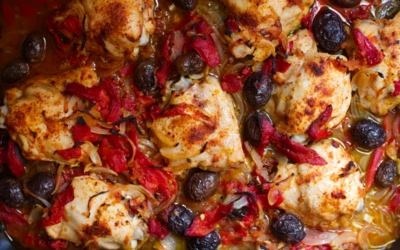
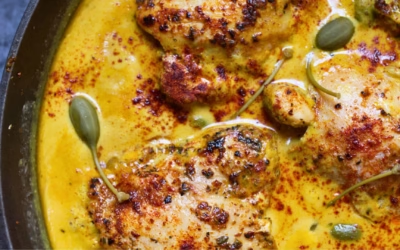
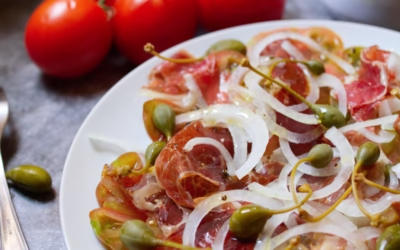
0 Comments